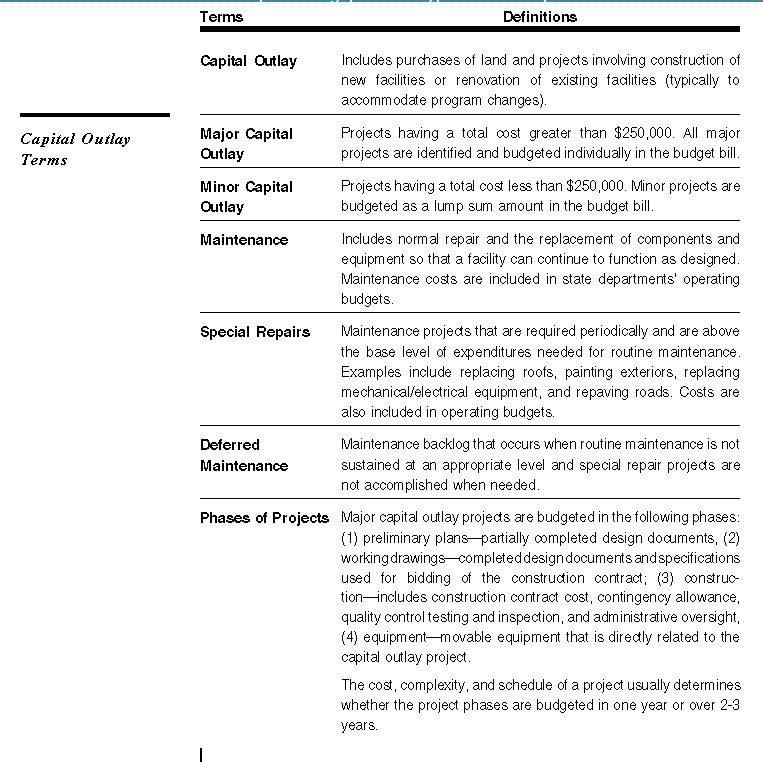
 Legislative Analyst's Office
Legislative Analyst's Office
The purpose of state funding for capital outlay is to provide safe and functionally appropriate facilities as needed to operate state programs and provide state services.
In general, capital outlays are budgeted and administered differently from program operations. Most distinctly, there is no base level of program expenditures from which incremental changes might be made from one year to the next. Rather, capital outlay programs are "zero-based" each year and funds are appropriated on a project-by-project basis. Capital outlay appropriations for any department might therefore fluctuate considerably from year to year.
Funding for most state capital outlay programs, including community colleges, is provided in the annual budget act. New prisons and state office buildings have recently been funded through separate legislation instead of the budget act.
Two other areas with significant capital outlay programs include:
In addition to state facilities, the state has provided substantial funding assistance to local governments for schools, jails, parks, and other facilities. Most of this assistance has come from general obligation bonds and for the most part is not included in the budget act.
Below are key terms often used in the context of state capital outlay budgeting.

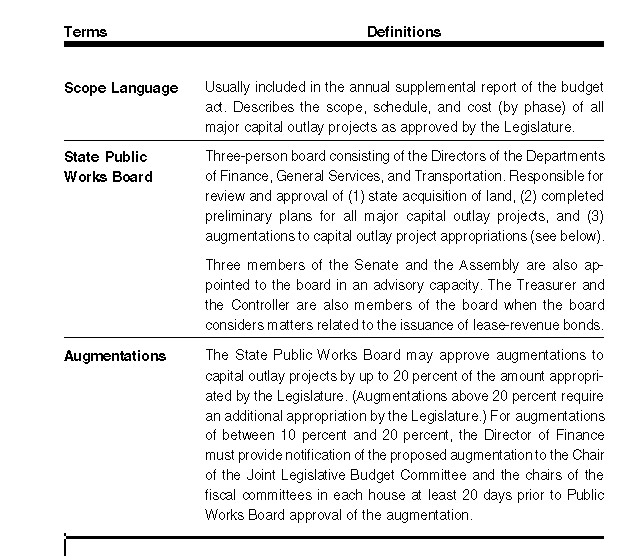
State agencies prepare project-specific five-year plans showing their priorities for capital outlay funding.
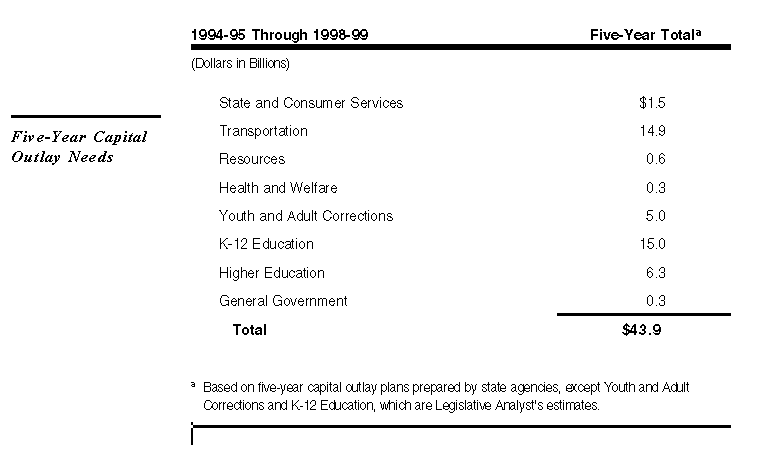
Capital outlay is funded from the General Fund, special funds, and bond funds. Direct appropriations from the General Fund have been very limited in recent years. Listed in the table below are the principal special funds that have been used for capital outlay programs. Bond funding is discussed later in this chapter.
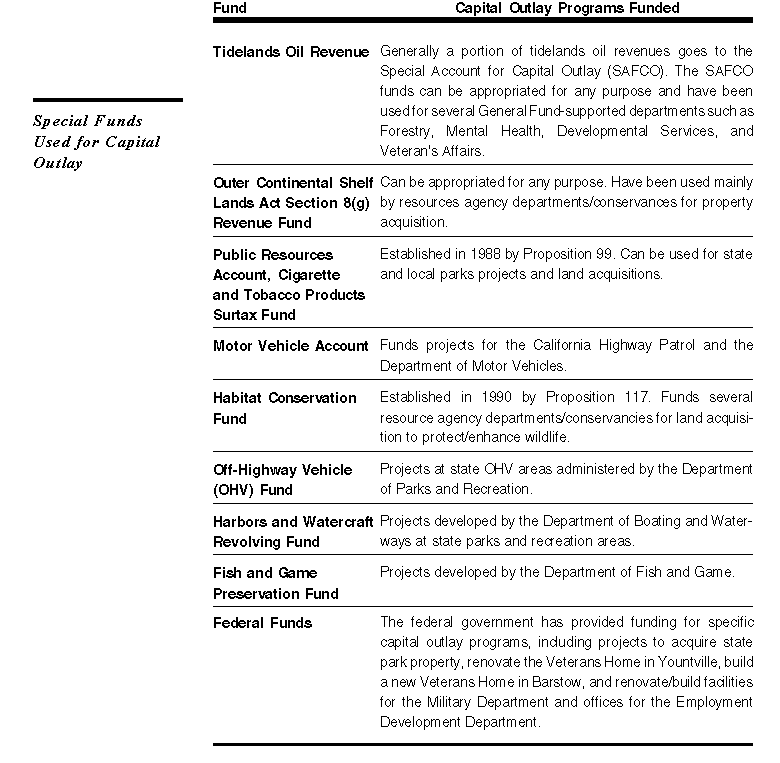
The state has provided about $6.7 billion over the last five years for capital improvements to nonstate facilities.
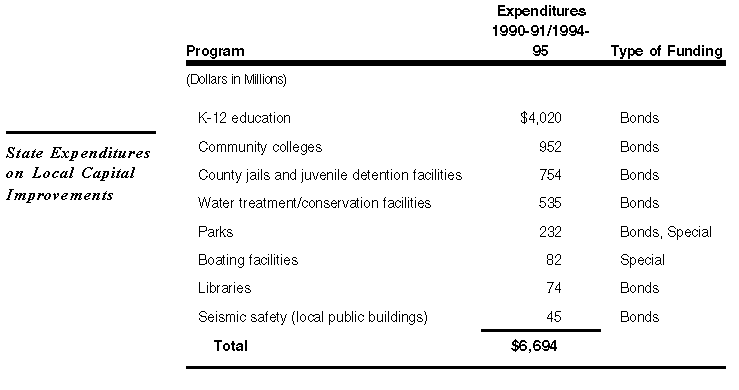
This state assistance has been funded primarily with general obligation bonds. Most of the amounts authorized under these bond programs have been spent. Consequently, continued state financing for these local capital outlay programs will require voter approval of additional general obligation bonds and/or increased use of other state funding sources.